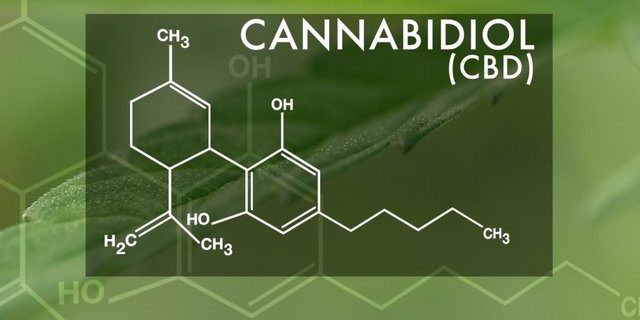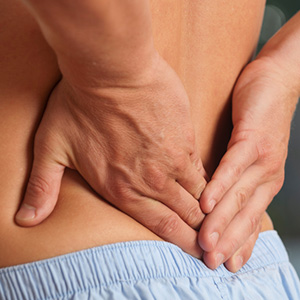The cannabis plant contains active chemical compounds called cannabinoids, which are something of a miracle. In 1988, scientists discovered that the icy hairs containing resin glands, or trichomes, on cannabis leaves and flowers contain active chemical compounds (nearly ninety have been isolated so far) that plug into cannabinoid receptors in the human brain. These plant-based versions of chemicals that our brains produce when under stress is a carbon copy of the cannabinoids in human breast milk which will deliver powerful antioxidants and can shift neurological and physiological patterns.

The most famous, and nurtured, cannabinoid in cannabis is delta-9-tetrahydrocannabinol, or THC. THC triggers CB1 receptors, which are also mediated by anandamide, the first human cannabinoid discovered in 1992. CB1 receptors determine how we see, smell, listen, and feel hunger, pleasure, and pain – which is why everything is beautiful, food tastes and smells amazing, and reality television can be enjoyable when people consume cannabis.
THC also activates CB2 receptors in the liver, heart, kidneys, blood vessels, endocrine glands, and lymph cells, making it a good overall tonic, but its psychoactive element has made it the darling of cannabis users. Breeders have met consumer demand with sinsemilla increasing THC percentages in the high 20s and even into the 30s, though most cannabis today has less than 10 percent THC, according to the National Organization for the Reform of Marijuana Laws. A University in Mississippi’s notes that the average THC content has increased from 3 to 4 percent in the 1990s to 13 percent today. Specifics aside, most cannabis has more THC today than it did a decade or two ago.
Related Article: Recent Updates
Cannabidiol (CBD) is an up-and-coming cannabinoid that’s getting high level attention because it delivers medical benefits without getting patients high. CBD, doesn’t bind to CB1 receptors, where psychoactive effects are triggered, and can actually mute THC’s psychoactive effects by opposing its actions at CB1 receptors. The CBD cannabinoid stimulates receptors that mediate pain, inflammation, and body temperature and regulate oxygen, blood, and dopamine. CBD slows down serotonin receptor signals, giving it an antidepressant effect. It’s being studied as a treatment for people with anxiety, sleep and eating disorders, and pain.
CBD was nearly bred out of most cannabis plants as growers sought more potently psychoactive cultivars over the past couple decades, and now researchers are scrambling to isolate the compound and study its medicinal effects. In 2013, a CNN documentary about Charlotte Figi, a young girl whose intractable seizures associated with Dravet syndrome were relieved after she ate oil made from a low THC, high CBD cultivar, spurred patients (and their parents) across the nation to seeking out CBDs. Breeders are meeting demand with cultivars containing up to 20 percent or more CBD content. Several states are considering or have passed legislation allowing patients to use CBD oil.
All Natural MD Florida issues medical marijuana doctor certifications and ID cards for patients suffering from one of the State approved Florida Medical Marijuana Registry Program qualifying conditions for a Florida medical marijuana card.
A spinal cord injury or a disease that affects the spinal cord is trauma that results in temporary or permanent change in the spinal cord’s normal facets and functions. Individuals who sustain a spinal cord injury often have lifelong and profound neurologic deficits and accompanying disability are common within individuals who have sustained a spinal cord injury. A spinal cord injury can result in paralysis of the muscles used for breathing. Also, paralysis and/or loss of feeling in most of the body including the arms and legs. More severe consequences of a spinal cord injury include weakness, numbness, loss of bowel and bladder control and numerous secondary conditions including respiratory problems, pressure sores, and sometimes fatal spikes in blood pressure. Preventing complications of a spinal cord injury is the most important factor when treating patients with the suspected injury.
In the United States, there are approximately 20,000 new spinal cord injuries each year, with automobile accidents currently the leading cause of injury. Falls, acts of violence (primarily from firearm wounds), and sports/recreation activities are also a major cause of spinal cord injuries. As the largest nerve in the human body, the spinal cord is used as a pathway to send and receive messages between the brain and the rest of the body. The spinal column is divided into four sections, from which 31 pairs of nerves emerge and extend to various parts of the body. The top of the spinal column is the cervical area, which consists of seven cervical vertebrae. Below the cervical area lies the thoracic area which includes the chest area and has twelve thoracic vertebrae. Below the thoracic area is the lumbar area which includes the lower back. Five lumbar vertebrae constitute this region.
Individuals who have experienced a spinal cord injury say that marijuana provides them sincere relief. A study out of Thomas Jefferson University showed and assessed marihuana utilization and attitudes in a national sample and found that over 60% of those who responded found cannabis to offer great relief from the symptoms caused by a spinal cord injury. Also, a majority of respondents said that medical cannabis was more effective than prescription medication in treating the conditions related to their injuries.
Spinal cord injury and disease is a qualifying condition for medical marijuana in Lakeland Florida and patients that suffer from this diagnosis can come to All Natural MD Lakeland Florida for a consultation to obtain their Florida marijuana card. At All Natural MD Lakeland Florida we make it as easy as possible to obtain your Florida marijuana card, by offering discounts to those members of our community who receive social security or are US veterans that served honorably.
The following information is presented for educational purposes only. All Natural MD Lakeland Florida provides this information to provide an understanding of the potential benefits of medical marijuana for patients living with one of the approved All Natural MD Lakeland Florida Medical Marijuana Registry Program qualifying conditions. Get Started on your medical marijuana card with All Natural MD Lakeland Florida today.
Related Articles:
- All Natural Medical Solutions – Lakeland Florida Marijuana Doctors Now Seeing Patients
- All Natural Medical Opens Medical Marijuana Clinic in Lakeland Florida
- All Natural Marijuana Doctors Is Open in Lakeland Florida
- How To Get A Medical Marijuana Card in Lakeland Florida
- Top 3 Strains of Medical Marijuana for PTSD Lakeland Florida
- Get A Medical Marijuana Card in Lakeland – All Natural MD



